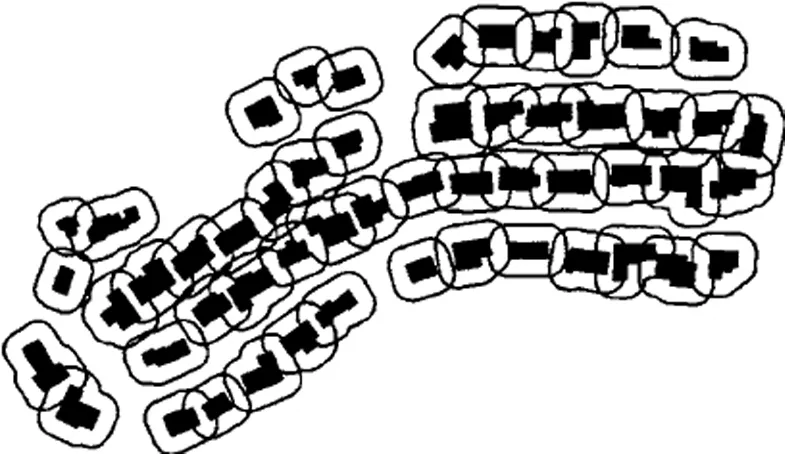If you want to know about the general exit requirements or auditorium design or lighting design in a building, please click the link.
In architecture, “FIRE ZONES” refer to the concept of dividing a building into compartments or areas, each of which has its own fire protection measures, such as fire-rated walls, doors, and windows. The primary objective of creating fire zones is to limit the spread of fire and smoke to other parts of the building and to provide safe escape routes for the occupants.
- The city or area under the jurisdiction of the Authority shall be demarcated into distinct zones, based on fire hazard inherent in the buildings and structures according to occupancy, which shall be called as Fire Zones.
1) Number and Designation of Fire Zones
- The number of fire zones in a city or area under the jurisdiction of the Authority depends upon the existing layout, types of building construction, classification of existing buildings based on occupancy and expected future development of the city or area. In large cities or areas, three fire zones may be necessary, while in smaller ones, one or two may be adequate.
- The fire zones shall be made use of in land use development plan and shall be designated as follows:
i) Fire Zone No. 1
- This shall comprise areas having residential (Group A), educational (Group B), institutional (Group C), assembly (Group D), small business (Subdivision E-1) and mercantile (Group F) buildings, or areas which are under development for such occupancies.
ii) Fire Zone No. 2
- This shall comprise business (Subdivisions E-2 to E-5) and industrial buildings (Subdivisions G-1 and G-2), except high hazard industrial buildings (Subdivision G-3) or areas which are under development for such occupancies.
iii) Fire Zone No. 3
- This shall comprise areas having high hazard industrial buildings (Subdivision G-3), storage buildings (Group H) and buildings for hazardous uses (Group J) or areas which are under development for such occupancies.
4) Change in the fire zone boundaries
- When the boundaries of any fire zone are changed, or when it is intended to include other areas or types of occupancies in any fire zone, it shall be done by following the same procedure as for promulgating new rules or ordinances or both.
5) Overlapping fire zone
- When any building is so situated that it extends to more than one fire zone, it shall be deemed to be in the fire zone in which the major portion of the building or structure is situated.

- When any building is so situated that it extends equally to more than one fire zone, it shall be deemed to be in the fire zone having more hazardous occupancy buildings.
6) Temporary buildings or structures
- Temporary buildings and structures shall be permitted only in Fire Zones No. 1 and 2 as the case may be, according to the purpose for which these are to be used, by special permit from the Authority for a limited period and subject to such conditions as may be imposed in the permit.
- Such buildings and temporary structures shall be completely removed on the expiry of the period specified in the permit.
- Adequate fire precautionary measures in the construction of temporary structures and Pandals shall be taken in accordance with good practice.
7) Restrictions on the type of construction for new buildings
These shall be as follows:
- Buildings erected in Fire Zone No. 1 shall conform to construction of Type 1, 2, 3 or 4.
- Buildings erected in Fire Zone No. 2 shall conform to construction of Type 1, 2 or 3.
- Buildings erected in Fire Zone No. 3 shall conform to construction of Type 1 or 2.
8) Restrictions on existing buildings
- The existing buildings in any fire zone shall not be required to comply with the requirements of the Code unless these are altered, or in the opinion of the Authority, such building constitutes a hazard to the safety of the adjacent property or to the occupants of the building itself or is an unsafe building.
- In the event of alteration, it shall be necessary to obtain permission of the Authority for such alteration consistent with fire hazard.
- Alterations/modifications/renovations shall be accomplished so as to ensure conformity with all the safety requirements of the new buildings.
- Such alterations shall not in any way bring down level of fire and life safety below that which existed earlier.
- Any addition or alterations or construction of cubicles or partitioning, for floor area exceeding 500 m2 for all high-rise buildings shall be with the approval of local fire authority.
It is important to note that the requirements for fire protection measures may vary depending on the type of building, its occupancy, and its height. The NBC also provides detailed guidelines for fire prevention and fire protection measures, such as fire alarms, sprinkler systems, and smoke extraction systems, to be implemented in each fire zone.